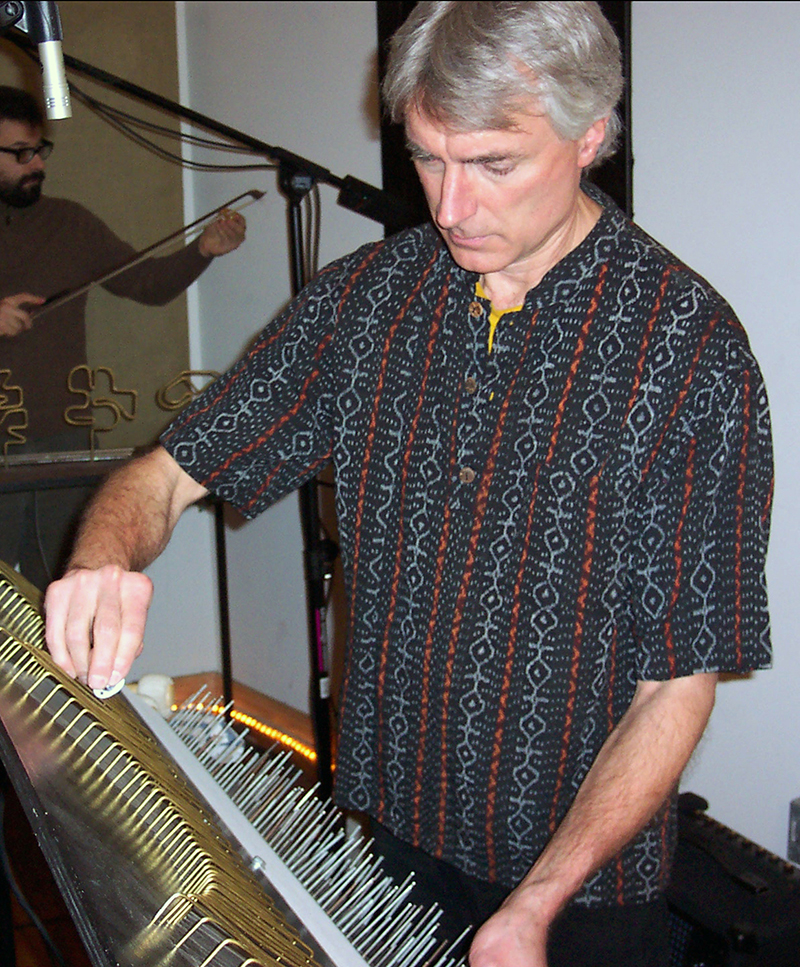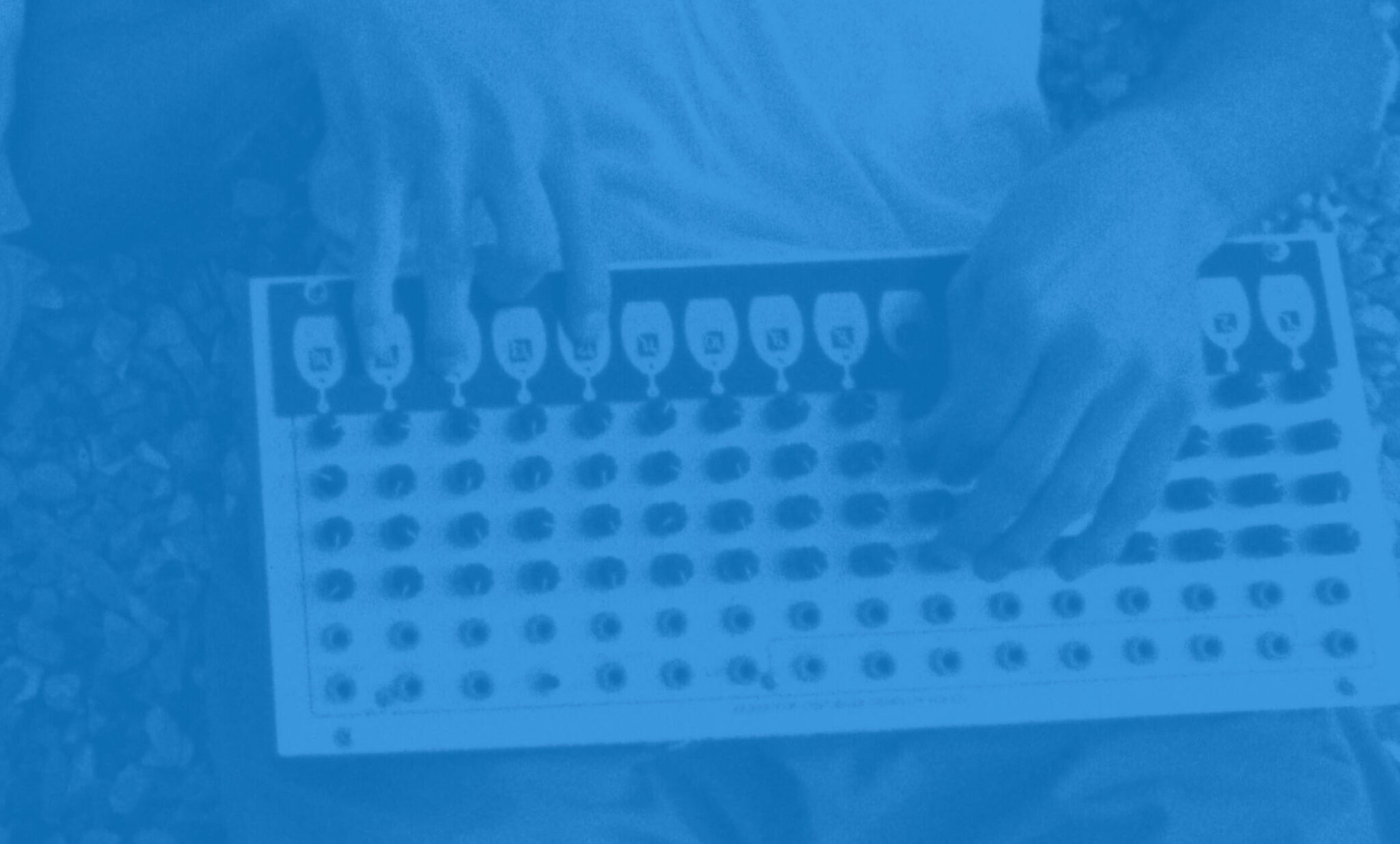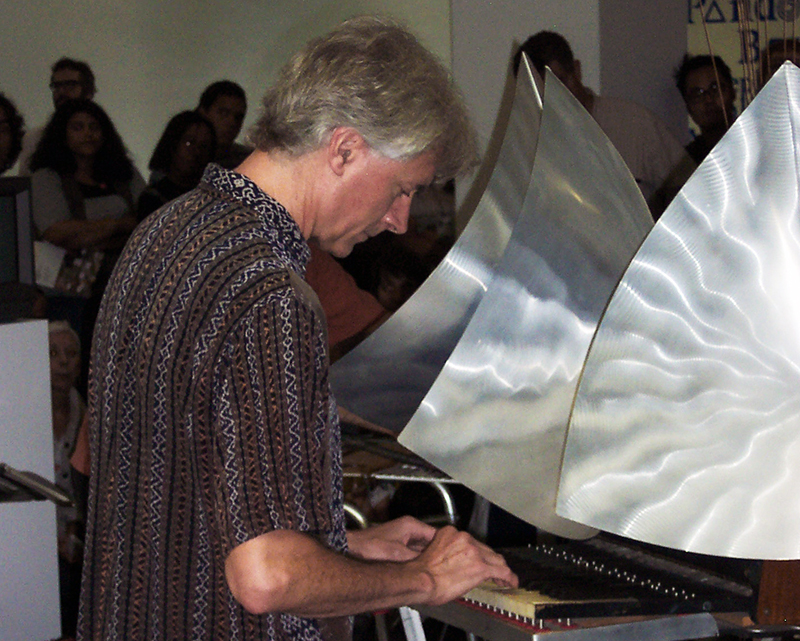
Equally at home with free improvisation, analog electronics, and invented instruments, Ed Herrmann has composed music for dance, theater, and broadcast; created site specific sound installations; produced and hosted radio, podcasts, and audio tours.
After studying music composition and learning analog synthesis on an Emu modular and EMS Synthi, a three panel Serge system became the primary instrument; decades later adding eurorack, Moog, and acoustic instruments. San Francisco, later Chicago, now Missouri, splitting time between studio and garden.
You started playing and releasing music in the early 80s, I remember that great Iron Lung single and then appeared the « Still Life In Concrete » LP a few years later. What have you been working on lately, and do you have any upcoming releases or performances?
Last year I did a few local performances. One was in a meadow, with sounds of birds and a creek in the background, which I greatly enjoyed. I also made a CD for Rural Situationism, Water Ways, composed entirely with recordings of rivers, although highly filtered and processed, so much of it sounds electronic or percussive. I always have pieces started, so as usual I’m sorting through unfinished sketches, starting new ideas, and deciding what deserves attention. I’m also planning to revisit a piece I made a few years ago with metal sounds. Originally in quad for live performance, I want to make a recorded stereo version for release.
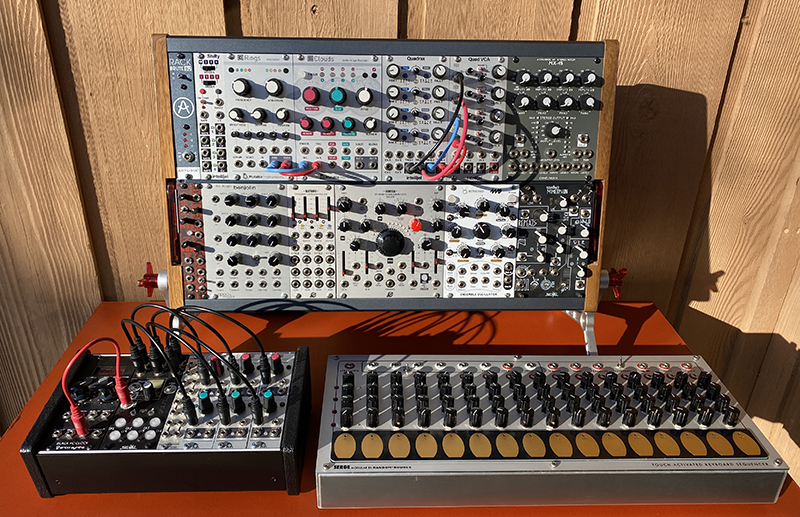
You have been animating radio programs for decades, how important is that for you to transmit, support/share the music of your peers?
It’s very important. Life is enriched with music and it’s a pleasure to share it with others. So much creative music is known only to other musicians and dedicated fans. It deserves a wider audience, and radio is one way to reach more people. I tend to mix a lot of different genres. Electronic music, contemporary composers, creative jazz, improvisation, invented instruments, field recordings, traditional music, nature sounds.
In my early days of radio, I had the naïve belief that if people could accept music that was unfamiliar or unconventional, then they would become more open minded, more accepting of cultural differences, less bigoted.
It hasn’t worked out that way, but it’s still worth trying.
Are you still playing in groups, improvising? How do you approach live these days? Do you still need an interaction with an audience or are you happy with studio work?
Improvising with friends (shaking the air together) is something I’ve always enjoyed. It’s social, like having a conversation or making a meal together. If you’re listening to each other you can’t really go wrong. It’s ok to try new things that may not work. If you screw up there’s no serious consequence. Performing in public is a privilege; it brings responsibility. You’re asking the audience to pay attention to what you’re doing, and usually they’re paying you for it. You need to make it worthwhile. When you succeed the audience amplifies the experience.
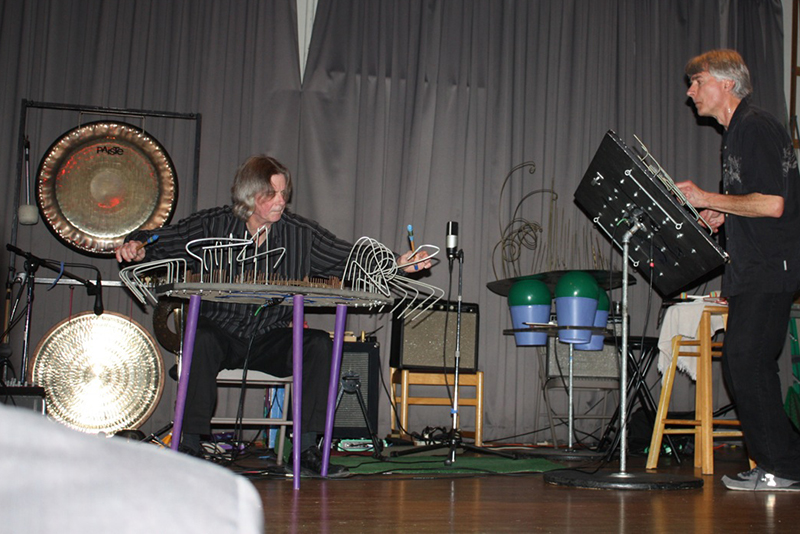
Obviously, you still need an interaction with an audience and how happy are you with studio work?
The studio is both. It’s a great place to experiment. The worst that can happen is you waste time. It’s also where you can refine and articulate your work. I want the finished recording to be something that rewards repeated listening, so I try to be meticulous with studio pieces.
Do you find that you record straight with no overdubbing, or do you end up multi-tracking and editing tracks in post-production?
Both. Sometimes I set up a patch in the studio that could be used in live performance, with several voices and flexible controls, and try to record a concise version. Other pieces are studio compositions, with tracks layered and edited. With these I usually have a plan or concept, but the sounds tend to dictate what’s needed as the piece develops.
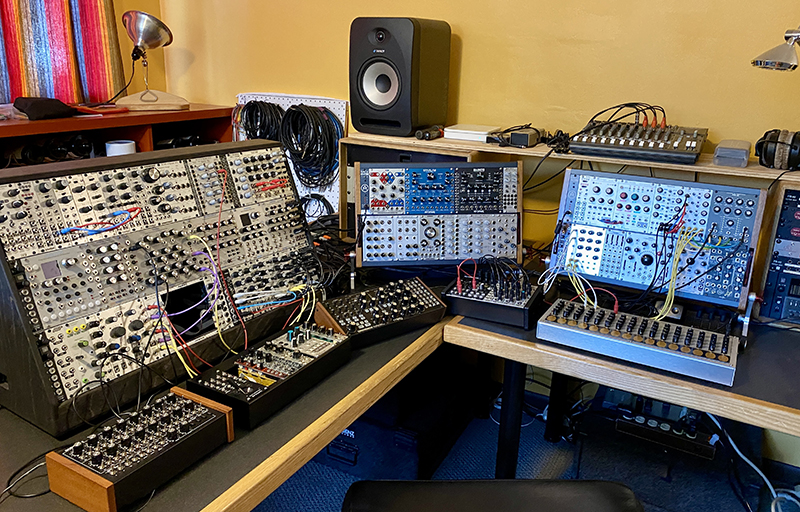
You are interested in gesture, physical move to create the music, right? What is your favorite way to achieve such expression? Improvising, taking risks? Combining with other musicians playing the acoustic?
Playing with others is the best, but whether alone or with others I want the electronics to sound alive.
It may seem simple, but a key consideration for any patch is, “what will my hands do?“
That is, what aspects of the sound am I manually affecting?
I usually use several LFOs or other control sources for gradual changes, but always have options under manual control. If a sequencer is involved, I’m actively playing it. If there’s an outside audio source, I’m manipulating it.
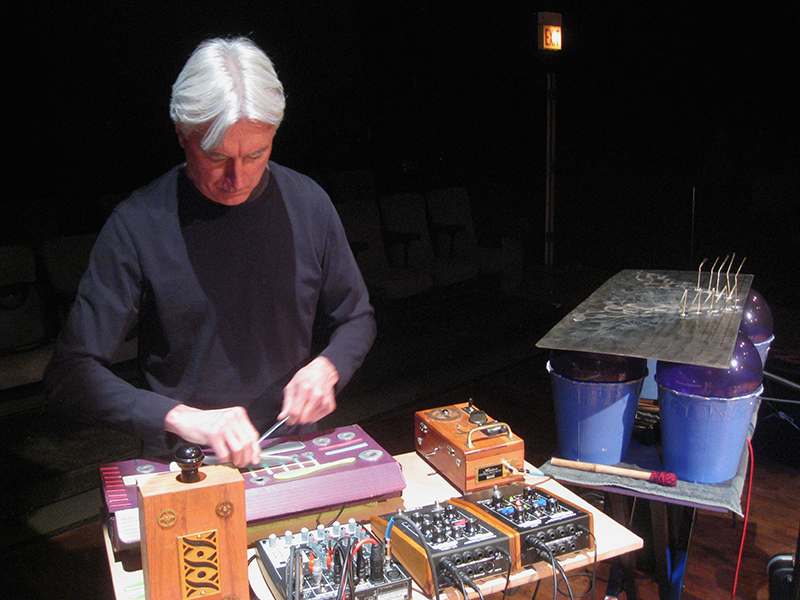
How were you first acquainted to Modular Synthesis? When did that happen and what did you think of it at the time?
I attended the University of Missouri at Columbia in the 1970s.
At first I didn’t have a focus but I gravitated toward the music classes, especially composition and music history. My composition teacher, Thomas McKenney, made the first electronic music studio at the university.
He had an EMS and then an Emu modular, which I wanted to spend all my time playing.
When did you buy your first system? What was your first module or system?
In 1983 I corresponded with Serge Tcherepnin, at his shop on Haight Street in San Francisco.
He sent me a catalog and diagrams and we wrote back and forth until settling on a three panel system. It had a TKB, four VCOs, two VCFs, slope generators, analog shift register, wave multipliers, frequency shifter, and a four input stereo mixer with VC panning.
I was in heaven. This was my main instrument for the next 30 years.
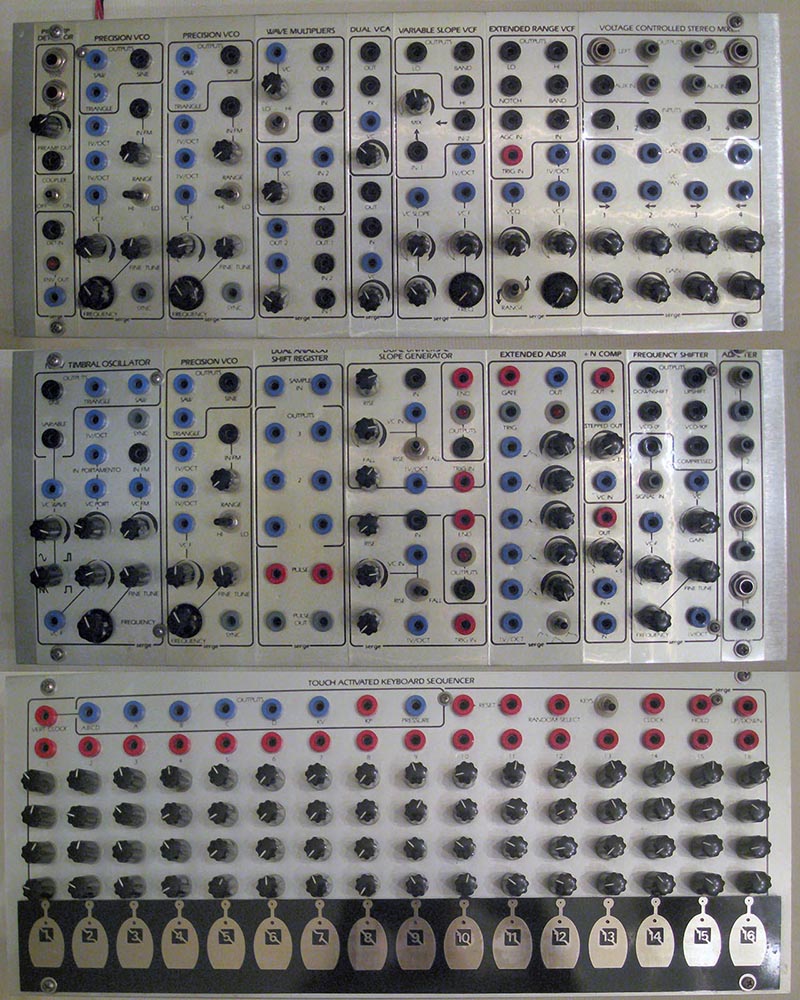
How long did it take for you to become accustomed to patching your own synthesizer together out of its component parts?
I jumped right in.
The first thing I made was an ominous bass line for a radio adaptation of George Orwell’s 1984, broadcast in January 1984.
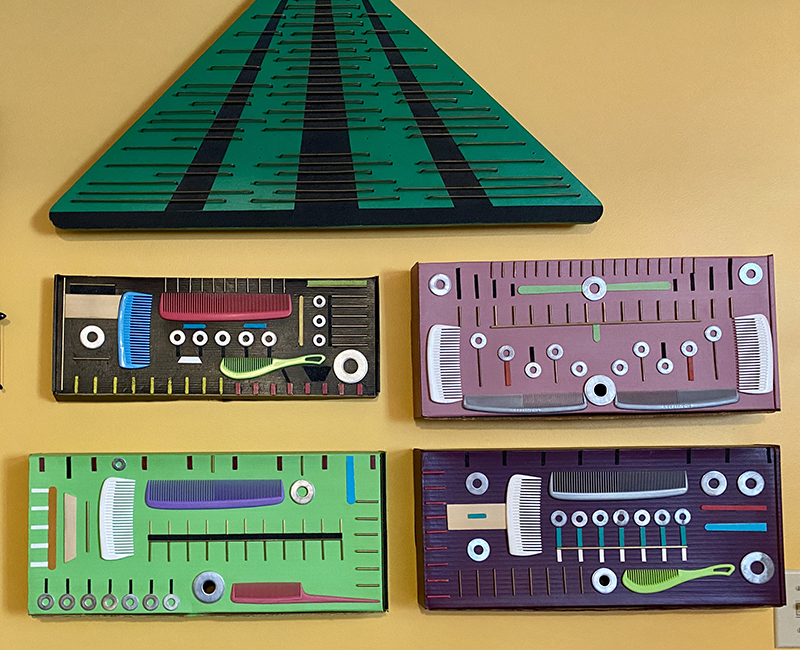
What was the effect of that discovery on your compositional process? On your existence?
Not long after acquiring the Serge, I moved to San Francisco and met many other musicians working in experimental, electronic, and improvisational music. It was, and still is, a rich and varied scene.
I had a home studio where people came to record.
Andrew Voigt, a wonderful sax and flute player, and I played together, sometimes with me altering his sounds through the Serge.
Tom Nunn, who designed and built hundreds of unique acoustical instruments, became a close friend. Tom was devoted to free improvisation and I loved playing with Tom and other friends. I’ve always enjoyed playing many different instruments, even if I don’t know how to properly play them, and invented instruments opened up a new world of fun.
As digital instruments were taking over, someone said to me, “the only reason to still have analog modular is to sample it.” I thought that was a repulsive idea, and kept on playing the Serge. The notion of waves interacting with waves, creating complex non-repeating patterns that can affect any aspect of the sound, plus manual interaction, just seems to be an endlessly fascinating realm to explore.
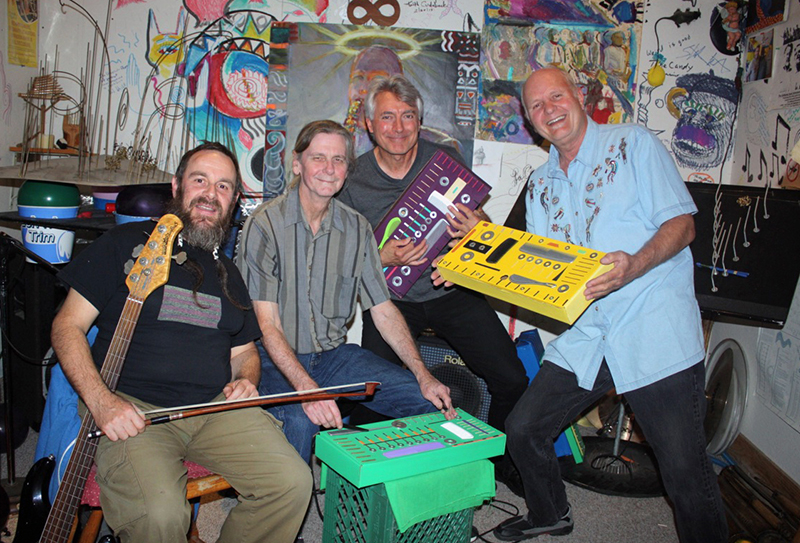
Quite often modularists are in need for more, their hunger for new modules is never satisfied?
I understand the desire, especially with so many new and innovative modules.
The analog/digital hybrids are amazing; some are like little systems in themselves. But I like to remember what the early artists did with limited means.
It’s not the tools; it’s the idea and the execution.
I also think of all the modules I already have that I have not fully explored, especially in combination with each other. Once a system reaches a certain size and complexity, you have a lifetime of exploration available.
I’m grateful that module designers keep innovating, but every musician doesn’t need every new module. Add only what contributes to your personal musical goals. However, if I had an extra pile of money laying around, I’d probably buy a Buchla.
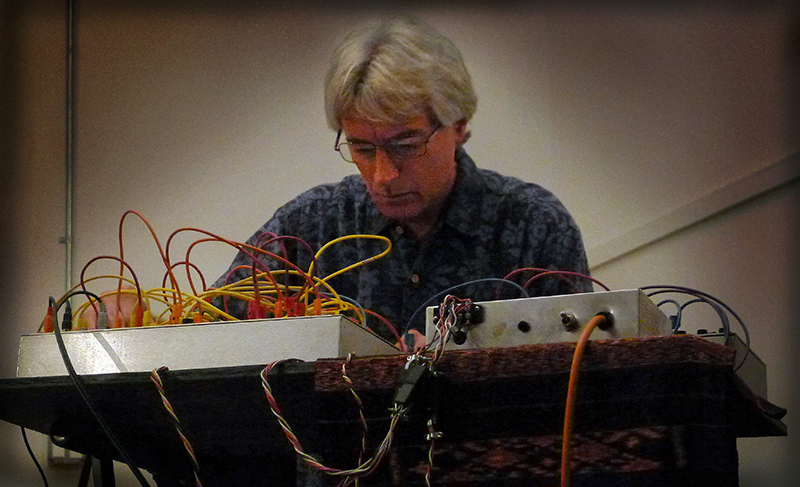
How has your system-instrumentarium been evolving?
A few years ago I sold my Serge system and switched to Eurorack. When I first started acquiring modules, I was trying to emulate the Serge system I was accustomed to.
That was not possible.
Despite the ingenious eurorack format, the quality of the different manufacturers varies wildly. They don’t even agree on what a sine wave is. So I’ve tried to learn which companies make modules I can relate to and rely on, and gradually build a system that can realize my ideas.
Would you say that the choice of an instrument can be an integral part of your compositional process?
It can be but it’s usually the other way around. The idea calls for certain instruments.
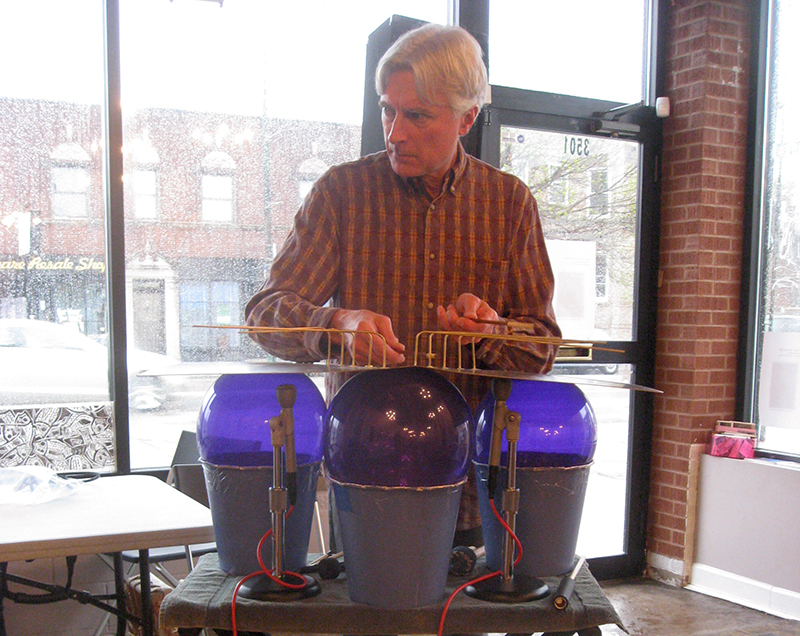
Would you please describe the system you used to create the music for us?
I often combine acoustic instruments or other sound sources with electronics, but for this session (except for the opening piece) it’s all eurorack modules.
I rarely take notes or sketch patch diagrams. I never figured out a satisfactory way of doing that with the Serge, and decided it’s better to learn how to listen and understand how the patch works.
“Low Orbit Clutter” and “Disinformation Rip Tide” are the same process. A Make Noise Tempi into Boolean gates triggers two or more voices that I manually manipulate. Multiple tracks are recorded, edited, and mixed.
For “Ululation” the main voice was recorded in one take, then played back through processing and VCAs to create the percussive sounds.
“Such” and “Trillium” are one take live patches. These five pieces use Intellijel oscillators, wave folders, and filters; a Cwejman VCO; Rossum oscillators and filters; and Mutable Rings and Clouds.
“Sleep Tight, Oligarchs!” is completely different and was made after you, Philippe, suggested an intro to the album. I recorded the lullaby years ago from a toy I’d bought as a baby gift for some friends. The other sounds were added to make a nightmare for those whose greed is strangling our world.
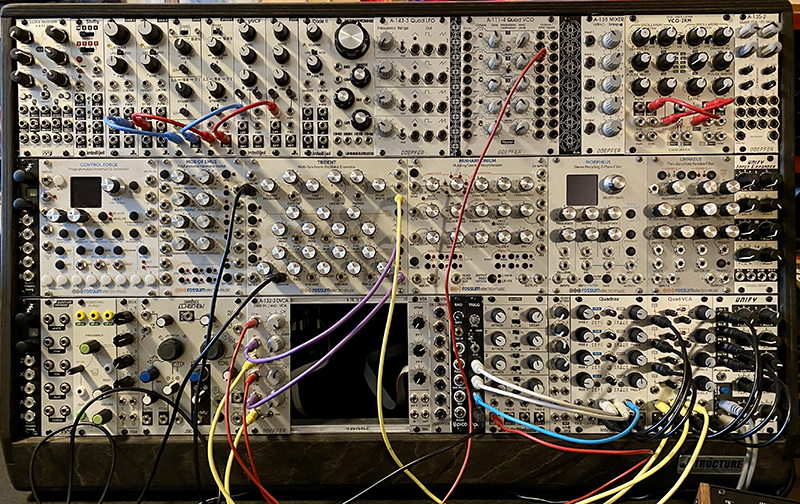
Do you pre-patch your system when playing live, or do you tend to improvise on the spot?
I usually have a patch with multiple options available and improvise as the show develops. It also depends on the situation. If other musicians are involved, that might mean that I need to match them in tuning or tempo, and it might mean that I can drop out and reset the patch.
What would be the system you are dreaming of?
Rather than dreaming of more gear, I’d prefer to have more time.
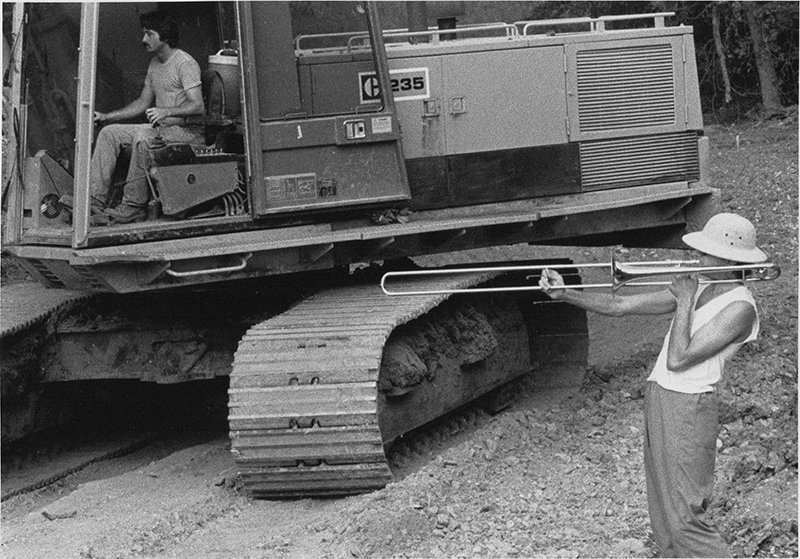
Which pioneers in Modularism influenced you and why?
Primarily Morton Subotnick, whose work I discovered while in college. His early music jumps out of the speakers like it’s alive. It’s clearly conceived and executed perfectly.
Other favorite early electronic artists (not necessarily modular) include Stockhausen, Xenakis, Laurie Spiegel, David Tudor, Eliane Radigue, and Léo Kupper.
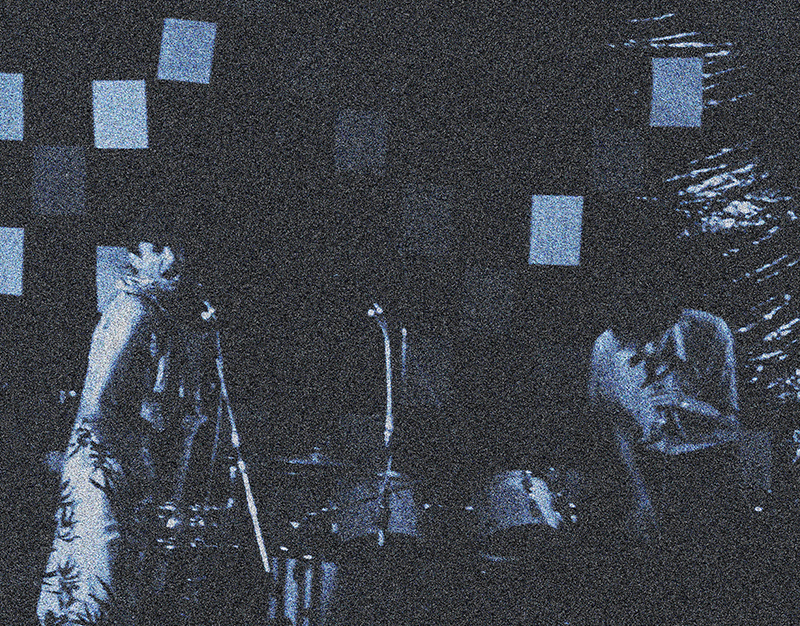
Are you feeling close to some other contemporary Modularists? Which ones?
I listen to other types of music as much or more than contemporary modular electronics. Thanks to Modular-Station and the Modulisme sessions I’ve discovered many great artists I would not have been aware of otherwise, too many to list here.
When I moved to San Francisco in the 1980s I met Tom Djll. We both had Serge systems and we played together on various occasions and I admire his approach.
Later I met Tom Dimuzio and he does great work as well.
A few years ago I heard David Lee Myers. We’ve never met but I like his work very much.
Any advice you could share for those willing to start or develop their “Modulisme” ?
Practice, learn what your instruments can do. Explore a simple patch with minor variations. Discover how to control the variables. Make sure you’re making music from your personal ideas, not doing a product demonstration. Listen to many different kinds of music, and hear what other people do. Humans were making music before we could talk. Honor the tradition and add your voice.
